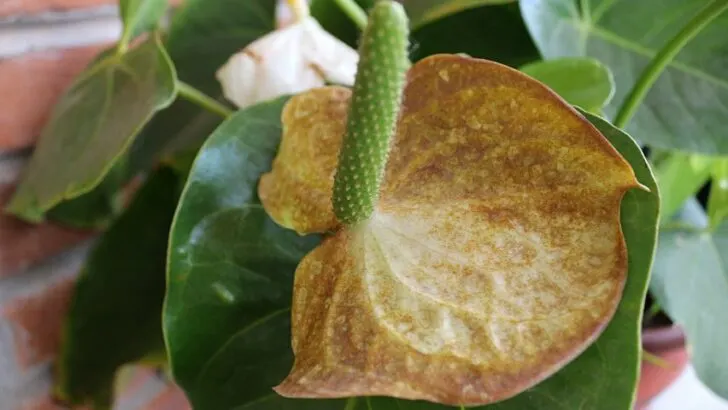Why are Anthurium leaves curling? This happens when something in its care is not on point. The anthurium plant is part of the Araceae family and shows when it is unhappy through its leaves.
I realized early on that the foliage is perfect for spotting houseplant care problems. Your plants will tell you if you are underwatering, overwatering, and so on.
The only problem is that multiple issues can have the same effect. I will, therefore all the common causes in this article.
Table of Contents
Anthurium Leaves Curling
Anthurium leaves curl because of the wrong soil, too much or too little light, or root rot from overwatering. Other reasons are temperature stress, over- and under-fertilization, water quality issues, insect infestation, and repotting. In addition, new leaves may curl, the pot size is incorrect, light, temperature, humidity, air circulation, water issues, fungus, or pests.
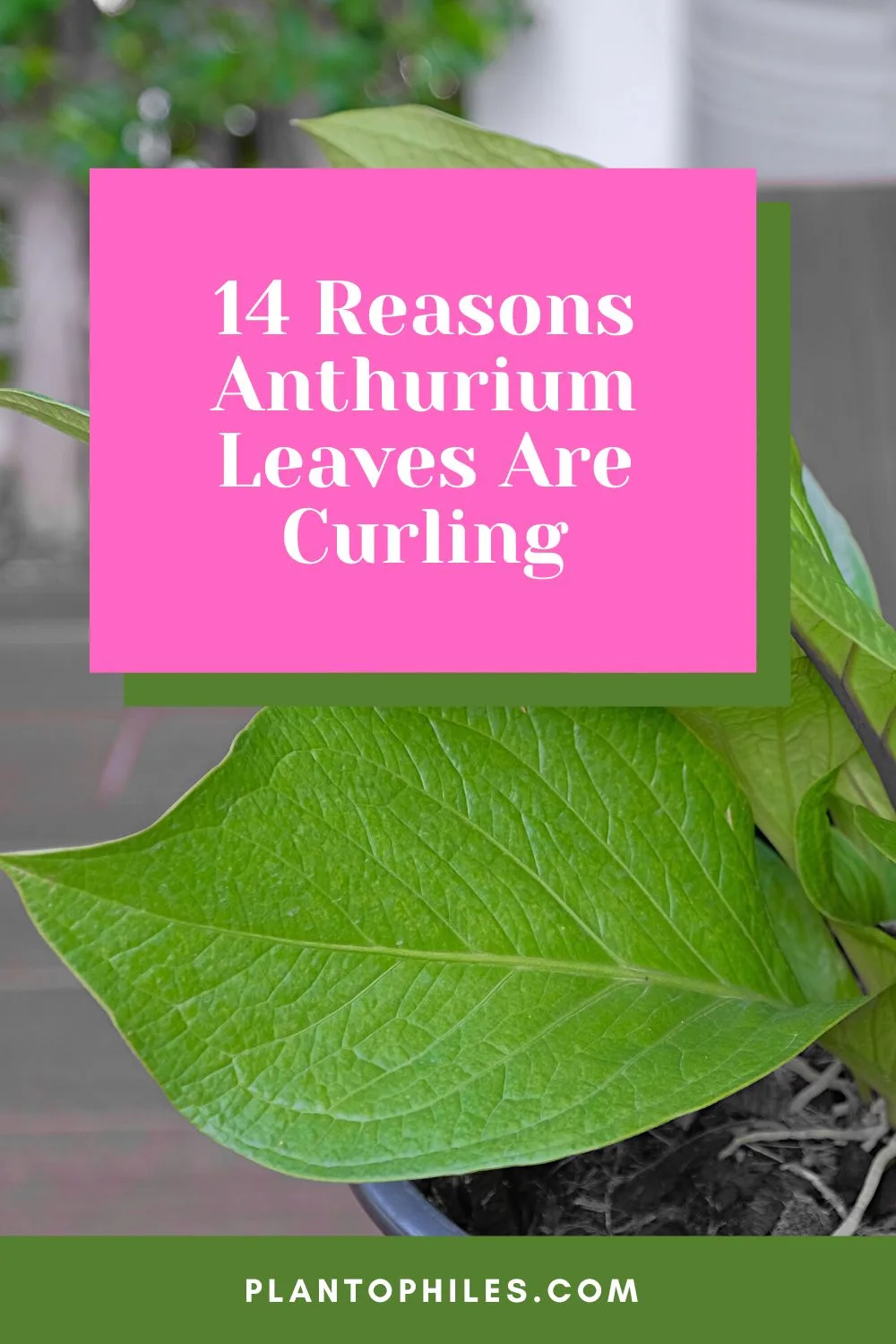
14 Reasons for Curling Leaves on an Anthurium
1. The Wrong Soil
Check the soil. More often than not, the main reason is an incorrect potting mix.
Anthuriums need well-draining soil. An ideal soil mix includes orchid bark, perlite, coco coir or peat moss, and charcoal.
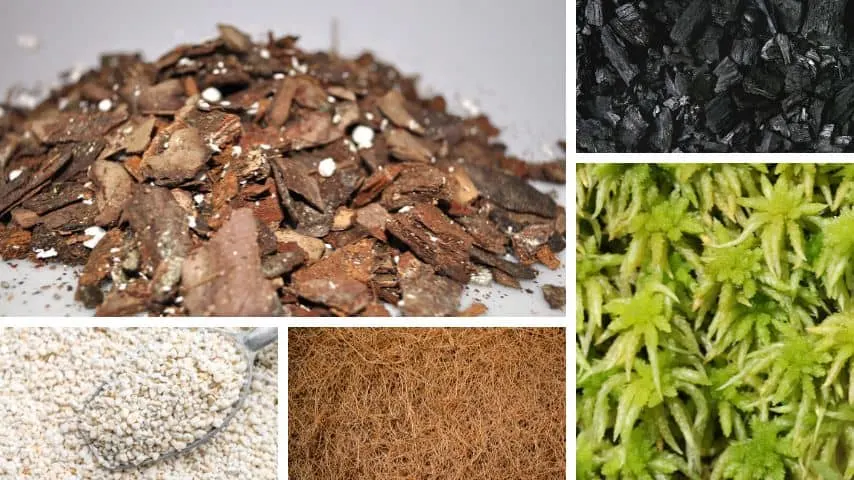
Sufficient drainage prevents root rot from developing. The roots need air pockets in between the soil. Chunky bits such as charcoal and orchid bark allow air to flow to the roots. Oxygen to the roots is essential.
Solution
If you identify an incorrect soil mix as the culprit, exchange the soil with an Aroid mix.
2. Root Rot from Overwatering
Anthuriums should be watered about once a week. It is essential to check the soil.
Water when the top 1-inch (2.5cm) of soil is almost dry. Never water if it is still reasonably humid.
Soggy soil is detrimental to plant health and can lead to leaf curling and yellow leaves.
Solution
In case you overwatered, remove the anthurium from its pot. Remove the soil and check the roots for root rot signs.
If the roots are soft and mushy, remove all the soil. Snip off all the mushy roots using pruning shears.
Take the plant out of the pot and hold it under running tap water. Rinse the healthy roots with lukewarm water. Exchange the soil. Disinfect the pot.
3. Underwatering
It isn’t easy to know how much water a plant needs. Underwatering is less common than overwatering. But if you water your Anthurium infrequently, you might underwater it.
This might cause leaves to turn brown. Or curling of leaves might be visible.
Solution
Water frequently, about once a week. When you water, water until the water comes out of the drainage holes. Keep the soil slightly humid.
4. Too much Direct Sunlight or Lack of Light
Anthuriums such as Anthurium clarinervium grow best in bright indirect light. Direct sunlight scorches the anthurium’s leaves, which can lead to curling. In the worst case, they will even turn brown and wilt.
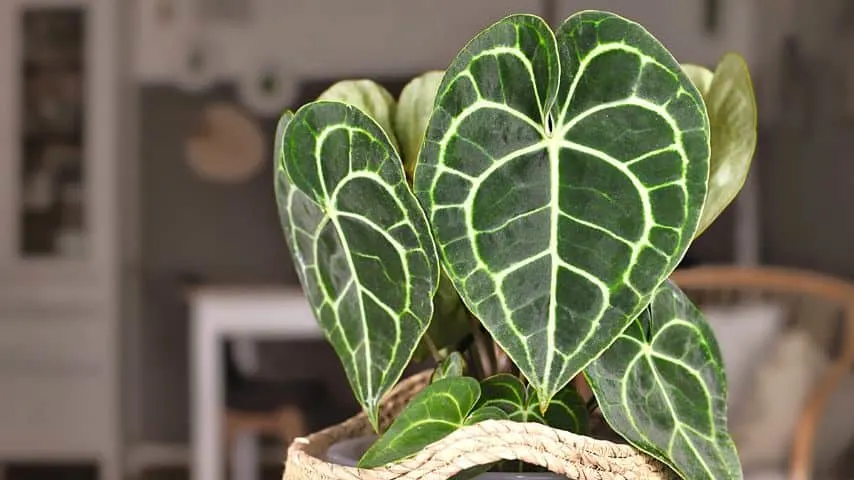
A southern-facing window direction can lead to too much direct sun. On the other hand, a northern-facing window will not allow sufficient lighting. The foliage needs adequate light levels for photosynthesis.
Solution
Place your plant into an eastern- or western-facing window. Keep the plant a couple of inches away from the glass. The anthurium’s leaves are sensitive.
5. Temperature Stress
Too high or low temperatures lead to temperature stress. The ideal temperature range is 77-92°F (25-32°C).
In addition, large fluctuations and sudden increases or drops have adverse effects and cause the leaves to show it.
Solution
Keep the plant away from heating units as well as cold drafts. Do not keep an Anthurium too close to a window.
Move it a couple of inches away, as window locations can get very cold in winter.

6. Over or Underfertilizing
A well-balanced fertilizer with an NPK ratio of 10-10-10 or 20-20-20 once a month is ideal. Fertilize in the growing months in summer and spring.
Always use the recommended strength on the package. You can also dilute to 1/2 or 1/3 of the recommended strength. If you fertilize too frequently or too much, it can cause curling on the plant’s leaves.
On the other hand, underfeeding deprives the plant of essential nutrients. Important Micronutrients are nitrogen (N), phosphorus (P), and potassium (K). Macronutrients such as Iron (Fe), Manganese (Mn), Zinc (Zn), Copper (Cu), and Boron (B) are also essential.
Solution
If overfertilization is the cause, flushing the soil with water is the best solution. Too much fertilizer burns the roots and foliage. The reason is the build-up of too many salts in the soil.
The water will remove excess fertilizer and salt buildup. If you are under-fertilizing, start by adhering to a regular schedule. Fertilize your anthurium once a month during the main growing seasons.
7. Water Quality
The water quality varies from location to location. The chlorine and fluoride concentration in water can lead to leaf problems.

In addition, hardiness is a factor. If the water contains lots of minerals, the water might be too hard. This can stunt the anthurium’s growth.
Then there is also the pH level. Tap water can be alkaline or acidic. This can change the soil pH.
The ideal soil pH level for Anthurium is between 5-6. Whether the pH is too low or high, the plant’s roots cannot take in any nutrients and water anymore.
Solution
Use either rainwater, distilled water, or reverse osmosis water. These water types contain little to no impurifications. Yet this also means that you need to add more fertilizer.
Alternatively, let tap water sit for 12-24 hours under bright light. A lot of chlorine and chloramines will dissipate.
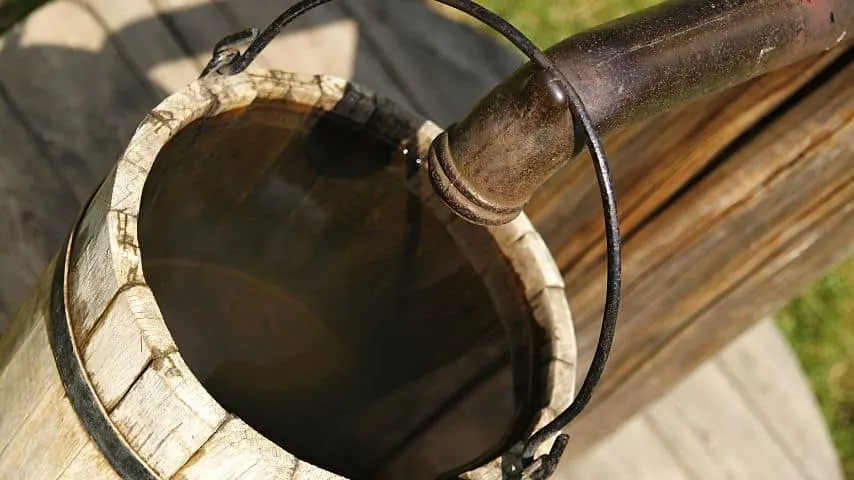
8. Insect Infestation
Bugs on plants are a common cause for Anthurium leaves to curl. Many insects, such as mealybugs, spider mites, thrips, and scale, suck plant sap from the leaves. Other culprits are whiteflies and fungus gnats.
In addition, some insects, such as thrips, are a vector for diseases. The result is distorted leaves and growth. Leaves will curl.
Solution
Check your plants weekly for pests. Focus also on the underside of leaves. Inspect the foliage and note any yellowing or brown spots.
Use neem oil and a mix of insecticidal soap, rubbing alcohol, and water. Add a few drops of each into a spraying bottle with water. Apply it weekly on your plants and also the soil.
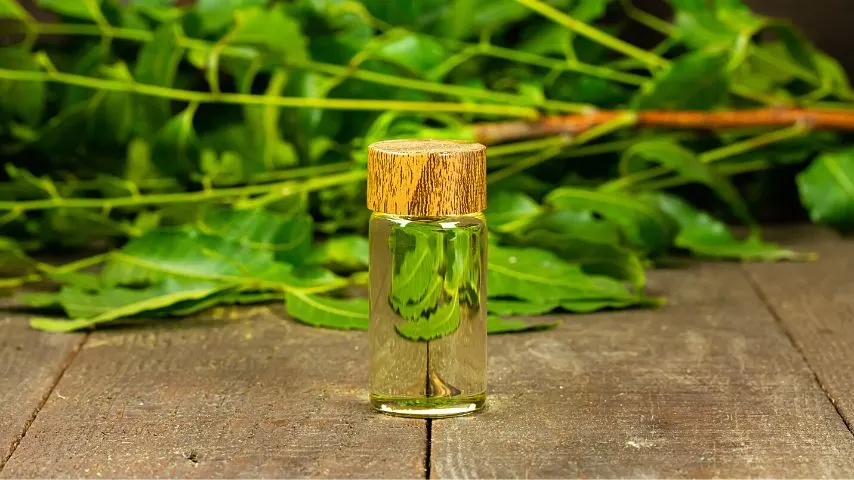
Make use of beneficial nematodes such as Amblyseius swirskii and Cryptolaemus montrouzieri.
9. Transplanting and Repotting
Repotting is stressful for plants. You should never repot when your plant is in bloom.
You should also not repot an Anthurium immediately when you have ordered one via mail. Leaves starting to droop and leaves turning yellow and brown are common causes of anthurium leaves when stressed.
Solution
The best thing is not to stress your plant. If you have already repotted your anthurium, make sure you provide it with a spot that has high humidity. The ideal humidity level is 70-80%.
You can use a humidifier or a pebble tray or put plants close together. This increases humidity. High humidity will help a stressed plant to recover.
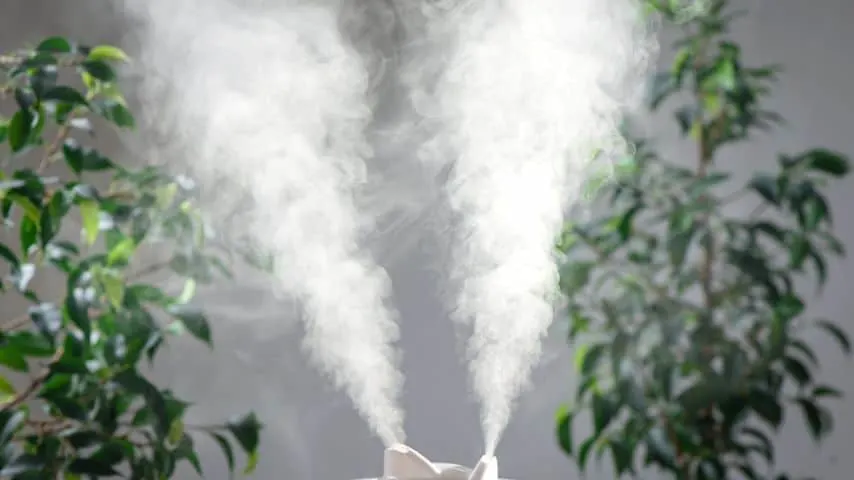
Repot in spring and summer. Your plant grows faster in the growing season and will adapt and grow new roots more quicker.
10. New Leaves
When new leaves start on an Anthurium warocqueanum or veitchii, they will be folded and curled. Anthurium leaves start small and increase in size over multiple days.
This is natural, unlike Monstera plants, where the leaf that gets out of a cataphyll is closer to the final size.
Solution
If new leaves start small, curled, and then expand naturally, there is no need to worry.
However, if we are dealing with distorted growth and the leave are disfigured, other causes might be the reason if this is the issue. Look for causes and solutions in the different sections.
11. Unsuitable Pot
Anthurium plants don’t like being root-bound. Or pot-bound. This will stunt and halt the growth and can lead to leaves of the plant that do not look healthy.
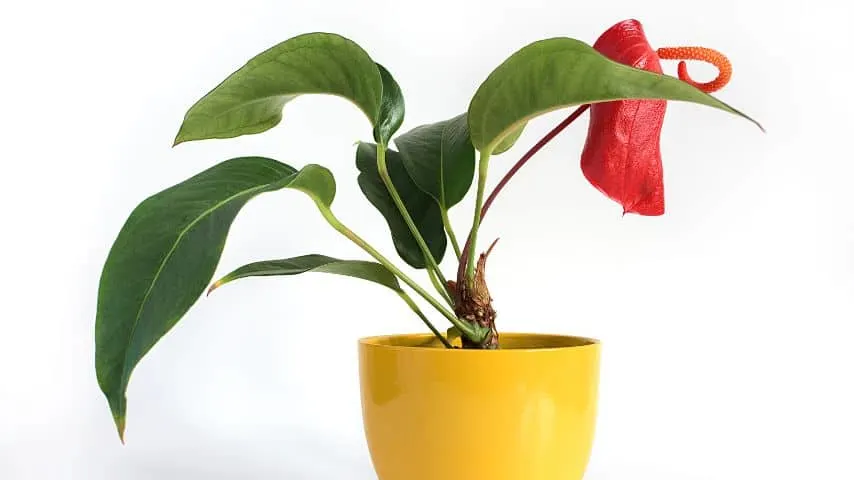
Curling leaves at some point in the plant parent journey are typical. If you have been growing a plant in a pot for some time, the plant might have become too big.
Other causes for leaves showing signs that something is not right are pots without potting holes. Excess water cannot drain and will accumulate in the soil. This can be causing the curling.
Solution
Take out the pot and inspect the roots. If the roots themselves fill in the pot almost entirely and little soil mix is present. it is time to repot.
Also, if roots come out of the potting holes, you should repot your plant. The Anthurium plant has become too big. Look for a pot that is 1-2 sizes bigger than the previous one.
12. Low Humidity
Anthurium plants, such as the Flamingo flower, love high humidity. The ideal humidity is 70-80%.
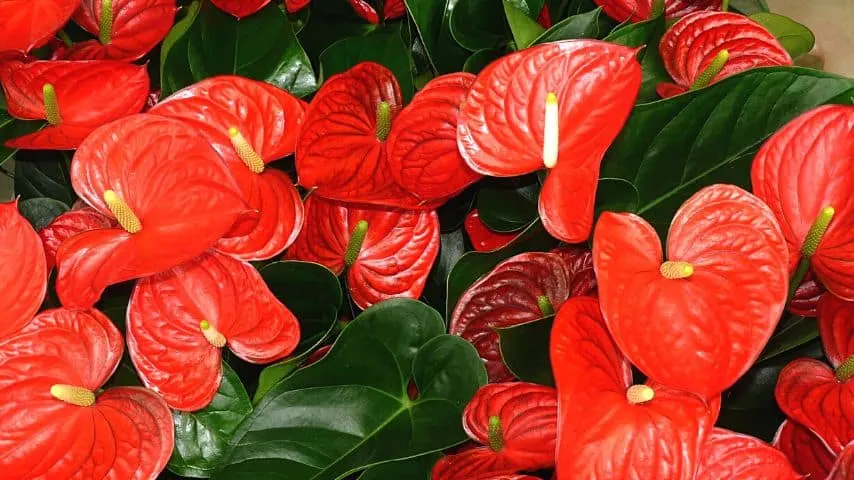
They will tolerate lower humidity and might even survive 40-50%. But they won’t thrive.
Anthurium care doesn’t end with the right soil and temperature. High humidity is essential for preventing curling leaves on Anthurium.
Brown spots and curly leaves are not only signs of a lack of water. It can also indicate insufficient air humidity.
Solution
Measure the air humidity. If it is too low, install a humidifier.
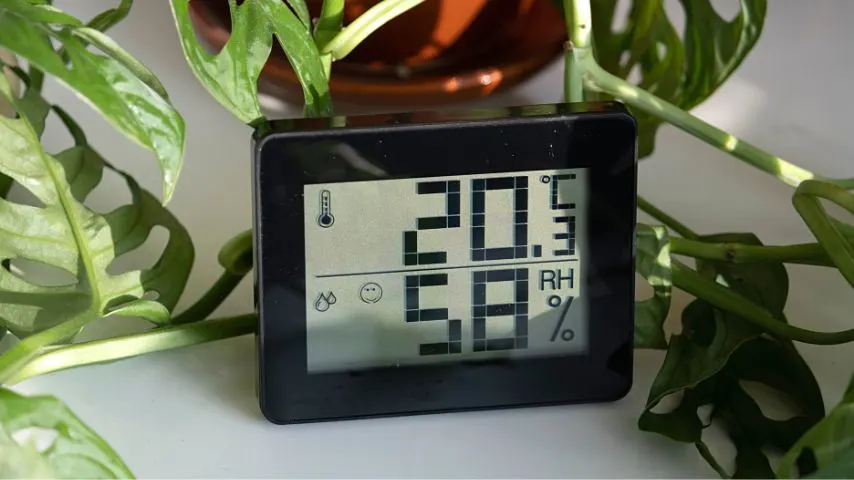
Use a pebble tray underneath the pot. Fill it with water. Put plants beside each other to increase humidity.
13. Fungus and Bacteria
The foliage of plants such as Anthurium andraeanum is stunning. It has green, heart-shaped leaves that rival the blooms. But fungus and bacteria alter the look of leaves.
The University of Florida mentions that Anthurium is susceptible to fungus and bacteria. Common fungi are Pythium, Rhizoctonia, and Phytophthora. They cause root rot, as well as bacteria. Bacterial blight is one. The culprit is Xanthomonas.
Lesions and brown and yellow patches on the leaves are all signs. Spots on the leaves with brown centers and yellow halos are also common.
Damaged leaves, as well as wet leaves, spread diseases further. Curling or wrinkling follows.
Solution
I do not recommend misting your Anthurium. A lot of sources propose it to increase the humidity. But it is not a viable option.
The moisture cannot be increased substantially in open rooms. Leaves that stay too wet for too long are a host for bacteria. These will swim across leaves.
Allow for sufficient airflow. Use a ventilator and make sure the leaves can dry. They should not be wet for longer than 30 minutes.
Do not overwater. Use a well-draining medium. This allows for airflow to the roots as well.
14. Air Circulation
The surface of the leaves needs to dry up quickly. Anthurium plants require ample airflow to roots and foliage.
Brown or yellow leaves follow if the airflow is insufficient. They start curling. Leaf rot might develop.
Solution
Use a ventilator and turn it on/off multiple times a day or put it on a timer.
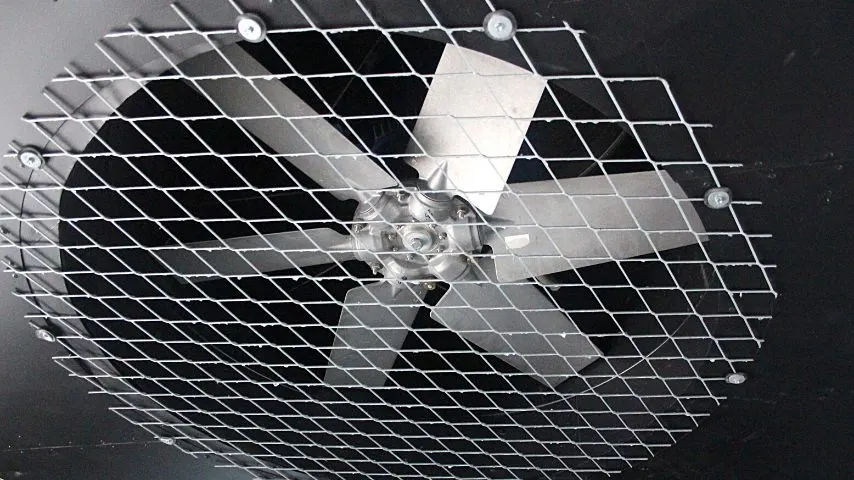
Do not mist leaves manually. Also, do not water and mist at night. Temperatures get colder at night. Leaves will dry slower.
Causes of Curling Leaves
Anthurium leaves curl because of the following:
- Wrong soil
- Root rot as a result of overwatering,
- Too little or too much light
- Temperature stress
- Over- and under-fertilization
- Water quality issues
- Insect infestation
- Repotting
- The pot size is incorrect
- Light
- Temperature
- Humidity
- Water issues
- Fungus and Bacteria
- Air circulation

Daniel has been a plant enthusiast for over 20 years. He owns hundreds of houseplants and prepares for the chili growing seasons yearly with great anticipation. His favorite plants are plant species in the Araceae family, such as Monstera, Philodendron, and Anthurium. He also loves gardening and is growing hot peppers, tomatoes, and many more vegetables.

